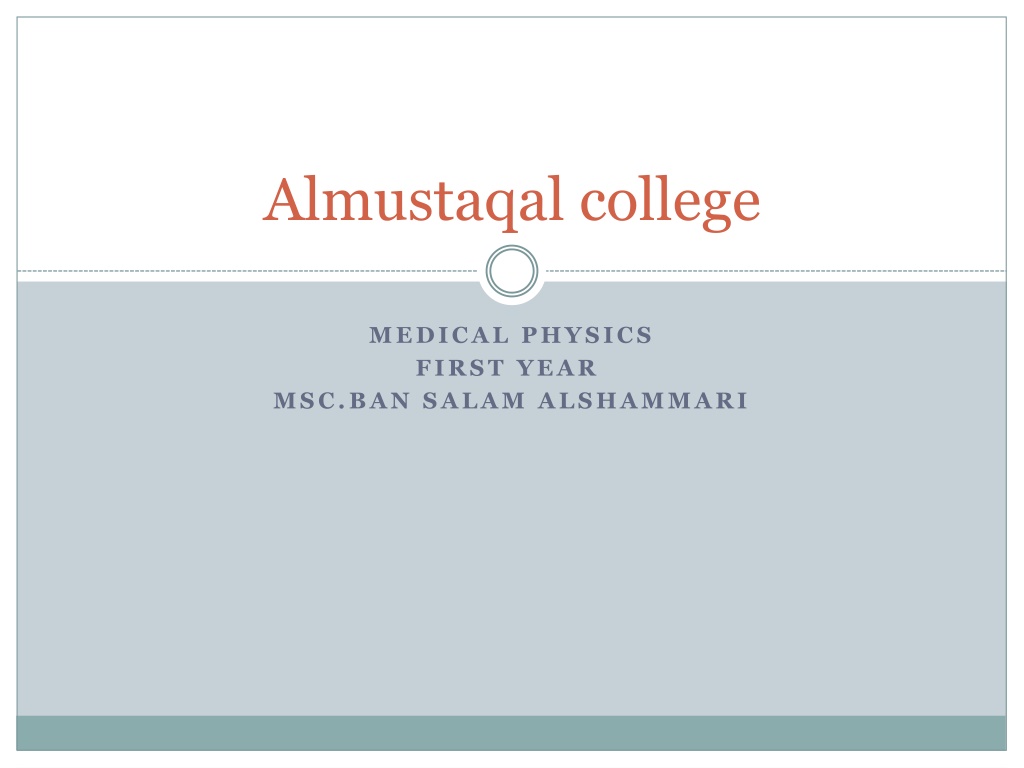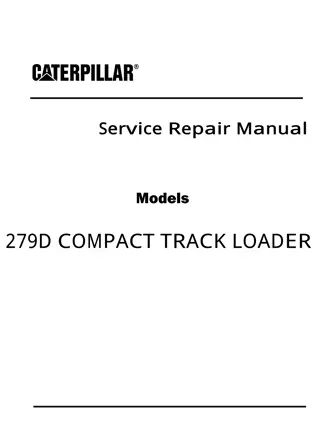
The Function and Composition of Bones in Human Body
Explore the essential functions of bones in the human body such as supporting, locomotion, protection, storage of chemicals, sound transmission, red blood cells generation, and bone composition. Learn about the importance of bone health and the role of osteocytes in maintaining healthy bone tissue.
Download Presentation

Please find below an Image/Link to download the presentation.
The content on the website is provided AS IS for your information and personal use only. It may not be sold, licensed, or shared on other websites without obtaining consent from the author. Download presentation by click this link. If you encounter any issues during the download, it is possible that the publisher has removed the file from their server.
E N D
Presentation Transcript
Almustaqal college MEDICAL PHYSICS FIRST YEAR MSC.BAN SALAM ALSHAMMARI
Physics of the skeleton Function of bones:- Supporting: The system of bones and muscles support the body. The muscles are attached to the bones through tendons and ligaments Eg. Muscles and bones of legs and vertebrae 1.
Function of the bones Locomotion: Eg. Bone joints which permit the movement of one bone with respect to another. These hinges or articulations are very important for walking as well as for many other motions of the body. 2.
Function of the bone Protection: protection of delicate body parts is an important function of some of the bones. The skull, which protects the brain and several of the most important sensory organs (eye and ears), is extremely strong container while the ribs form a protective cage for the heart and lungs. 3.
Function of the bone Storage of chemicals: The bones act as chemical bank for storing elements for future use of the body, then the bones can withdraw these chemicals as needed, for example if the level of Ca fall too low in the blood, a calcium sensor causes the parathyroid glands to release more parathormone into the blood, and this in turn causes the bones to release the needed Ca. Nourishment: The teeth are specialized bones serve in providing nourishment for the body. Eg. Incisors, canines Sound Transmission: The three smallest bones in the body are the Ossicles. -They act as levers which provide an impedance matching. - They form a system for converting sound vibration in the air into sound vibration in the fluid of the cochlea 4. 5. 6.
Function of the bone 7. Red blood cells generation: The stem cells in the bone marrow generate the RBCs
Bone Composition The Bone is a living tissue which has blood supply as well as nerves with a special kind of cells distributed through the bone tissue; these cells are called Osteocytes The Octeocytes cells maintain the bone in a healthy condition. These cells make up about 2% of the volume of the bone, if these cells die (e.g. due to poor blood supply), the bone dies and it loses some of its strength. A series hip problem is caused by a condition called aseptic necrosis in which the bone cells in the hip die due to the lack of blood.
Bone composition Bones consist of two quit different materials plus water:- 1. Collagen: it is the major organic fraction of the solid bone. It is quite flexible, it has a fair amount of tensile strength so that it can bend easily if it s compressed. It forms about 40% of the weight of the solid bone and 60% of its volume. 2. Bone Minerals: it is the inorganic part of the solid bone. It is believed to be made up of caliciumhydroxyapatite [Ca10(Po4)6(OH)2]. It is very fragile and forms about 60% of the weight of the bone and 40% of its volume. The bone minerals crystals are rod shaped with diameters of 20 to 70 A . Because of the small size of the crystals, bone minerals have a very large surface area. Around each crystal is a layer of water containing in a solution many chemicals needed by the body. The large area exposed bone minerals permit the bone to interact rapidly with chemicals in the blood and other body fluids. As described above bone is composed of small hard bone mineral crystals attached to a soft flexible collagen matrix. These components have vastly different mechanical properties. This combination provides a material that is strong as granite in compression and 25 times stronger than granite under tension.
Bone remodeling: Since the bone is a living tissue it undergoes a change through the life, a continuous process of destroying an old bone and building a new one is called bone remodeling Bone remodeling is performed by specialized bone cells, they are: 1- Osteoclasts: They are specialized cells which responsible for destroying the bone. 2- Osteoblasts: They are specialized cells which responsible for building a new bone We have the equivalent of a new skeleton about every seven years, each day the osteoclasts destroy bone containing about (0.5 gm) of calcium, osteoblasts build a new bone by using about the same amount of calcium. While the body is growing and young the osteoblasts do more than osteoclasts, but after the body is 35 to 40 years old the activity of osteoclasts is greater than that of osteoblasts, resulting in a gradual decrease in the bone mass that continuous until death. This decrease is apparently faster in women than in men and leads to serious problems of weak bones in older women. This condition called Osteoporosis. It is one of the bone diseases which is produced by the reduction of the amount of Ca as a result: The mass of the bone decrease The volume decrease The density of the bone = mass /volume= 1.9 kg/cm3 it s remain constant.
Compact and trabecular bone If you cut the bones apart, you would find that it composed of two quite different types of bones: 1- Solid (compact) bone: This is found in the central shaft of the bone. 2- Spongy (cancellous) bone: This is made up of thin thread-like trabeculae (trabecular bone). It is predominantly found at the ends of the long bones. Trabecular bone is considerably weaker than compact bone due to the reduced amount of bone in a given volume. Therefore the trabecular bone has two advantages over the compact bone: Where the bone is subjected primarily to compressive forces, such as at the ends of the bones and the spine, trabecular bone gives the strength necessary with less material than the compact bone. Because the trabecular is relatively flexible, it can absorb more energy when large forces are involved such as in walking, running and jumbing. Note: Trabecular bone cannot withstand very well the bending stress that occurs mostly in the central portion of long bones
Hooks Law: The strain ( L/L) increases linearly, at first indicating that it s proportional to the stress (F/A), as the force increase the length increase more rapidly, and the bone breaks at a stress of about 120 N/mm2. The ratio of stress to strain in the initial linear portion is the Young s modulus, that is: Y= LF/ A L Where L= the length of the bone (mm) F= the force exerting on the bone (N) A= the cross section area of the bone (mm2) The compressive breaking stress of the compact bone is 170 (N/mm2), while the tensile breaking stress is 120 (N/mm2), Young s modulus of the compact is about 179 x 102 (N/mm2)
Bone Joints Joints are places in the body where two bones come together. Each bone ended with synovial fluid, the joints made most of the body movement are shown in the fig
The surface of the articulate cartilage does not smooth the roughens of the cartilage plays useful role in joint lubrication by trapping some of synovial fluid and because of its porous nature, other lubricating material is squeezed into the joint when it is under great test stress when it needs the most lubrication. When the pressure increased on the joint, the lubrication threads squeezed out of the cartilage into the joint in one end each lubricating thread remain in the cartilage, and as the pressure is reduced the threads pull back into their holes.
The viscosity of the synovial fluid decreases under the large shear stresses found in the joint The coefficient of friction of healthy joint was found to be 0.01 (much less than that of the steel blade on ice 0.03). (i.e. when 100 N force excretion a joint only 1 N of force needed to move it, which is the least friction in nature). Viscosity 1 / Lubrication


















